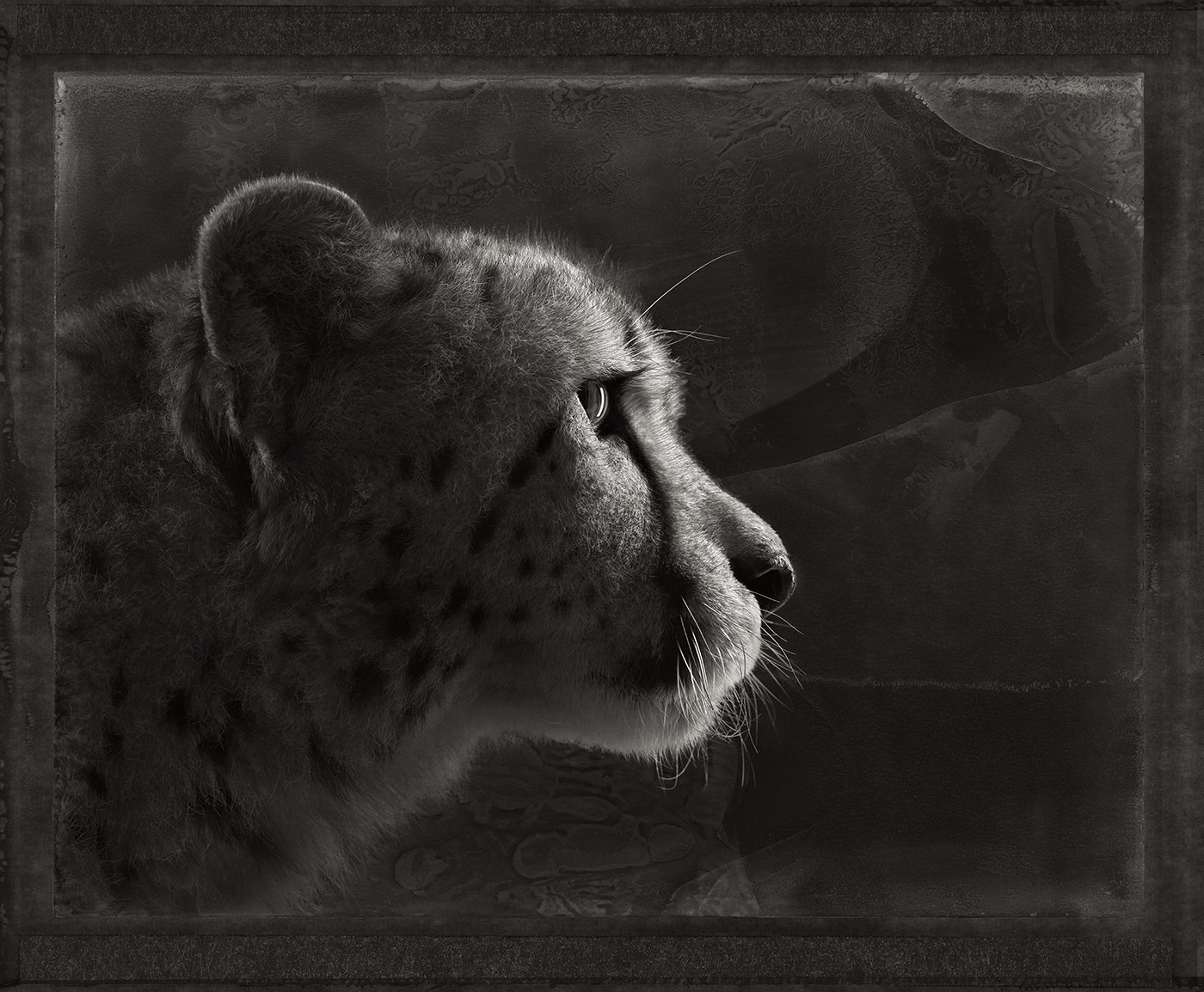




-
The original subjects of the first human art were animals, painted on cave walls at least 66,000 years ago in what is now Europe and Asia. Though this symbolic act served no utilitarian purpose for early hunter gatherers, it must have occupied their consciousness in deeply meaningful ways. Perhaps the works were a form of reverence for creatures they saw as powerful allies, essential food sources or mysterious deities. Whatever the specific origins, one corporeal mark was also present: the outline or print of a human hand. Across millennia and continents it was always there, a simple but profound statement from a distant Paleolithic ancestor: “I exist”.
I too am drawn to animals as the primary subject matter of my art. Unlike our early homo sapien relatives however, I am firmly rooted in a modern age––profoundly separated from the purely physical, present moment world of the wildlife I photograph. I make images with the precision of high- resolution digital sensors, expansive workflow software and large format inkjet printers. Despite this, I yearned to incorporate something tangible and unpredictable from the analog beginnings of my career. I selected long- expired Polaroid 4x5 instant film that was manufactured circa 1989, the same year I was taking my first serious photographs in New York City.
I processed and worked each unexposed sheet by hand. Despite the passage of decades, the chemistry would be occasionally viable. It produced an abstract landscape of texture and tone, and even more remarkable, the possibility of embedding an enduring personal mark in the transient wet surface: my fingerprints. I combined these manipulated artifacts with my contemporary portraits of animals to create a new series––one that embodies the fluidity of time and our immutable connection to wildlife through the evolution our species.
-
Archival digital pigment prints on 310 gsm matte paper. Final exhibition sizes vary from image to image, but on average, approximately 16"x24", 28"x45", and 40"x64" will be offered in limited editions.
